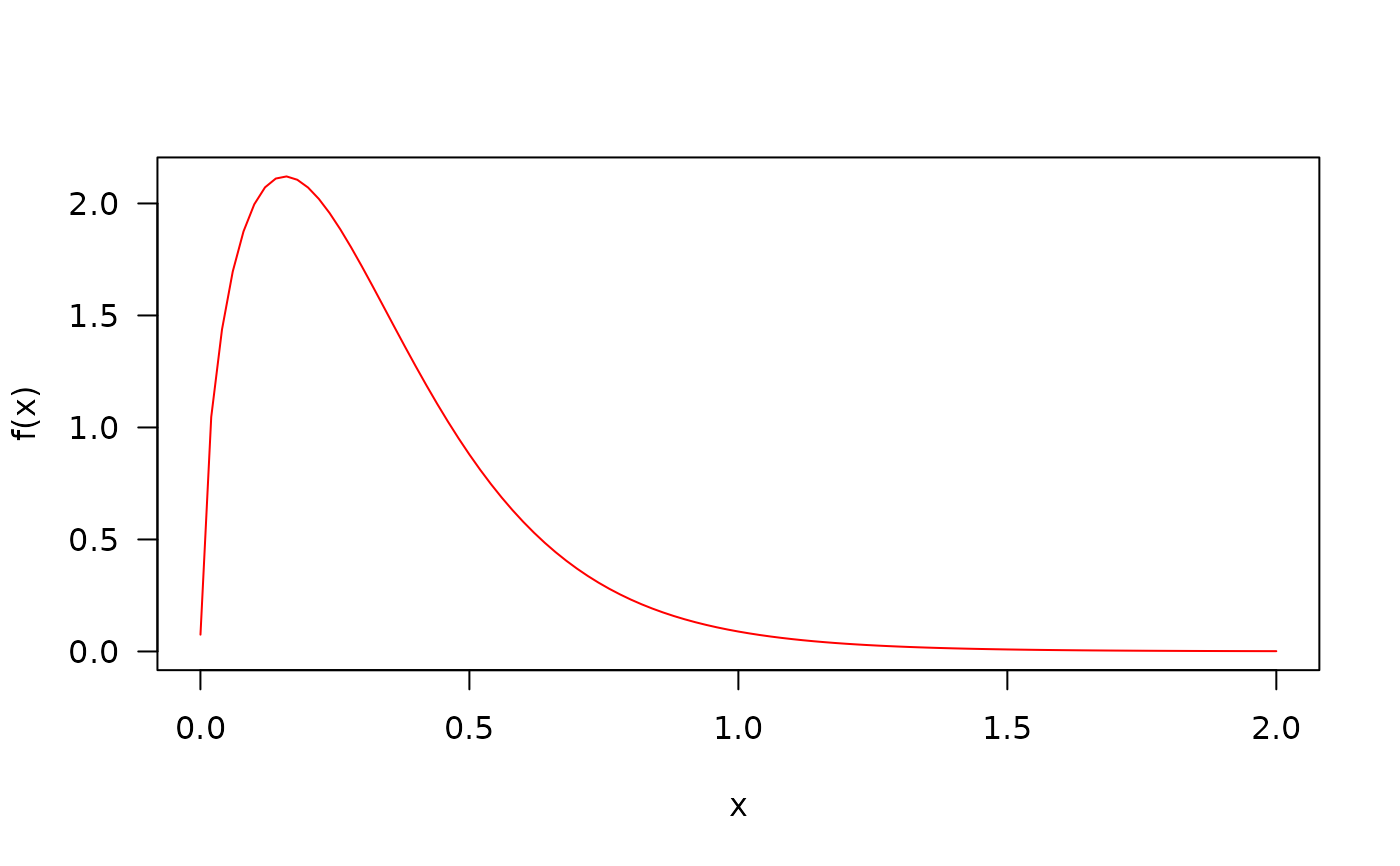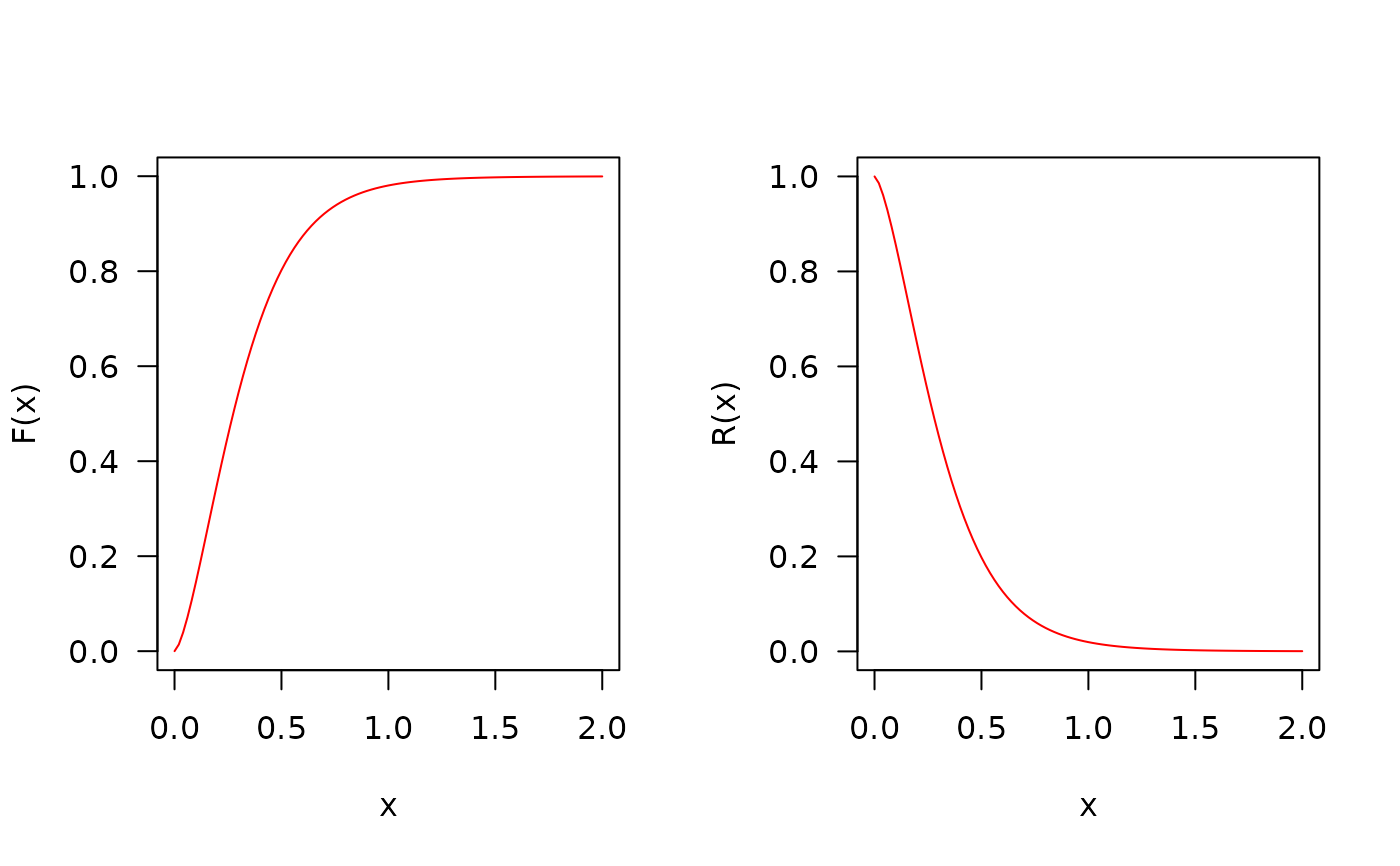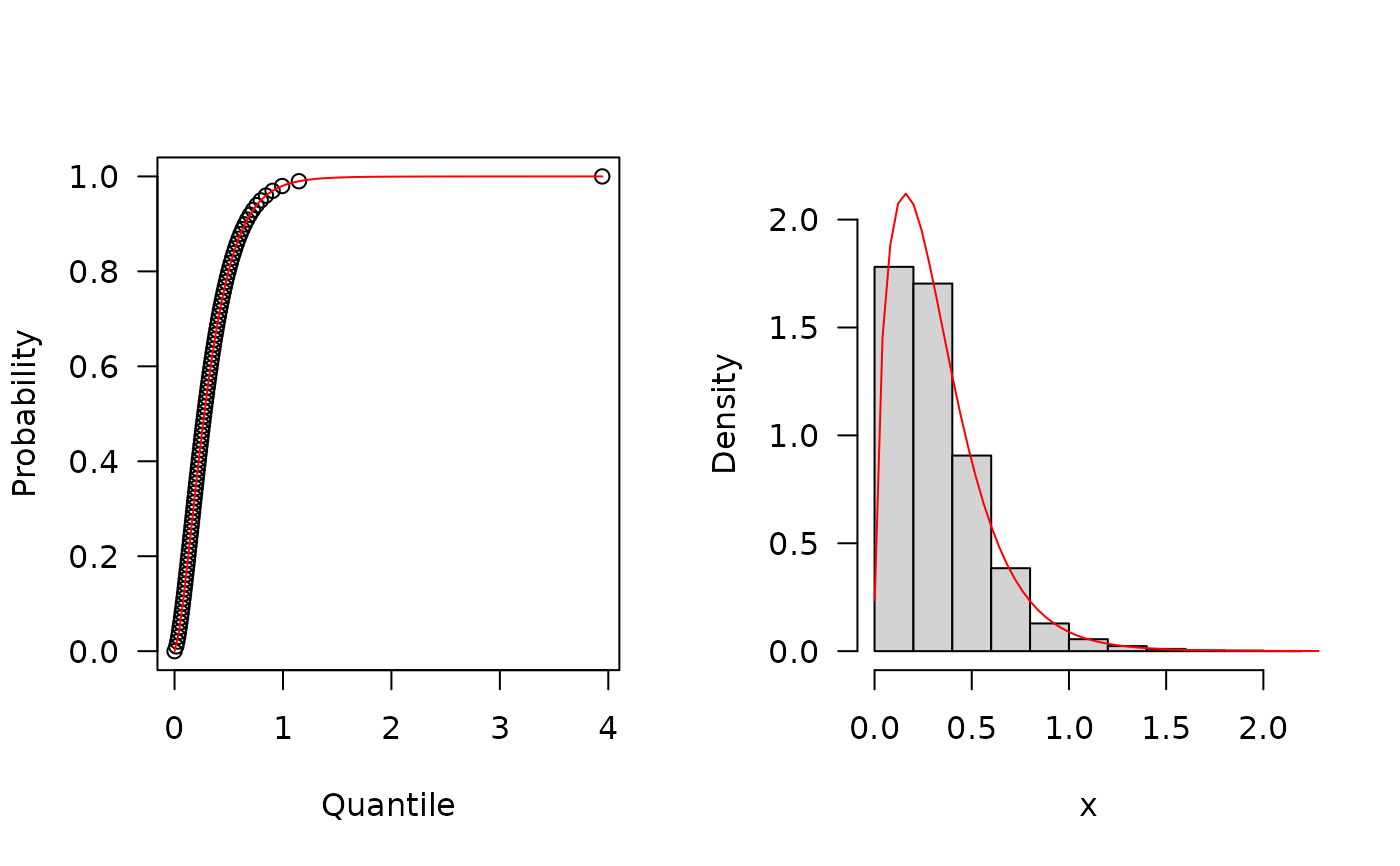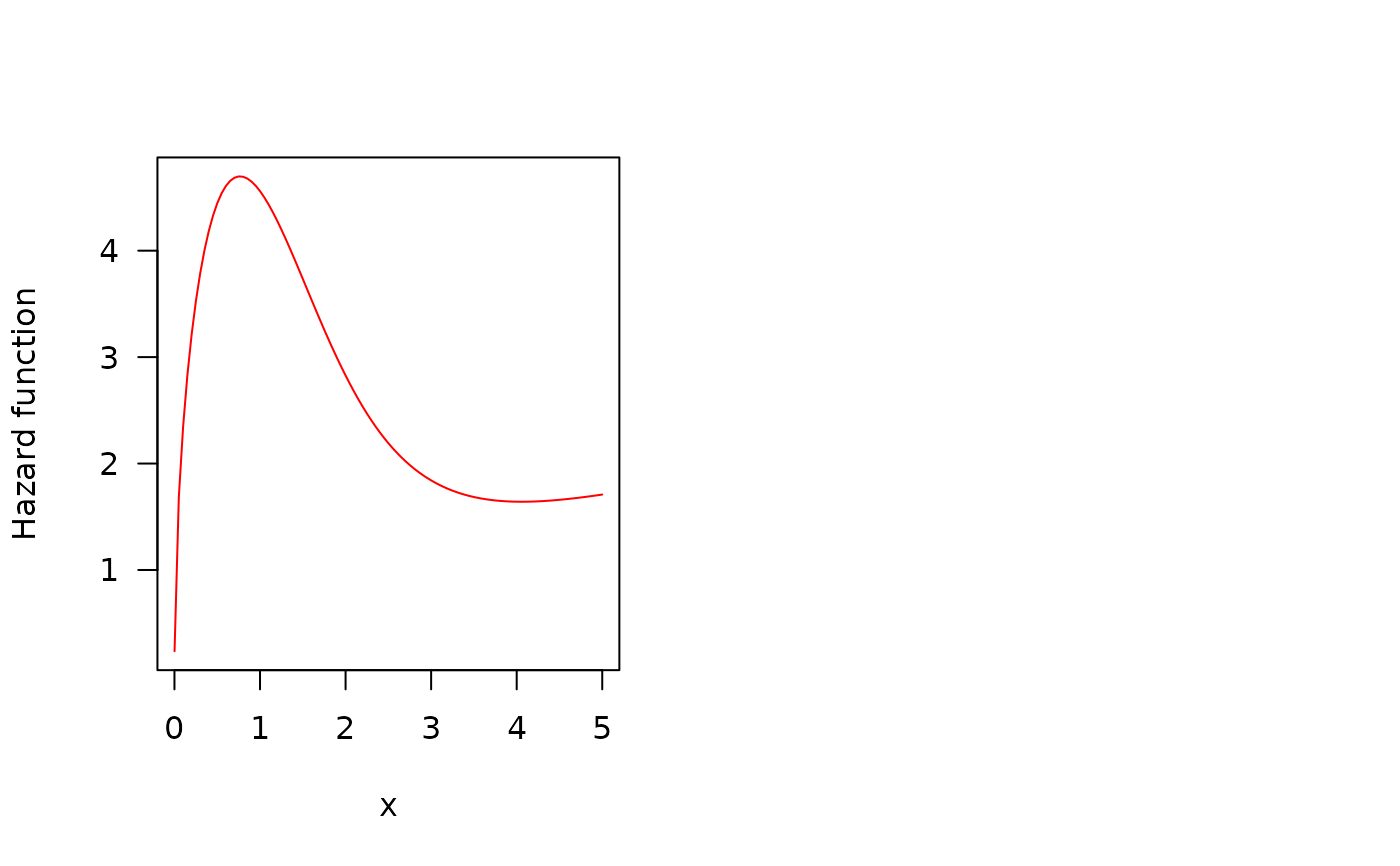Density, distribution function, quantile function,
random generation and hazard function for the Weibull Poisson distribution
with parameters mu, sigma and nu.
Usage
dWP(x, mu, sigma, nu, log = FALSE)
pWP(q, mu, sigma, nu, lower.tail = TRUE, log.p = FALSE)
qWP(p, mu, sigma, nu, lower.tail = TRUE, log.p = FALSE)
rWP(n, mu, sigma, nu)
hWP(x, mu, sigma, nu)Value
dWP gives the density, pWP gives the distribution
function, qWP gives the quantile function, rWP
generates random deviates and hWP gives the hazard function.
Details
The Weibull Poisson distribution with parameters mu,
sigma and nu has density given by
\(f(x) = \frac{\mu \sigma \nu e^{-\nu}} {1-e^{-\nu}} x^{\mu-1} exp({-\sigma x^{\mu}+\nu exp({-\sigma} x^{\mu}) }),\)
for x > 0.
Author
Amylkar Urrea Montoya, amylkar.urrea@udea.edu.co
Examples
old_par <- par(mfrow = c(1, 1)) # save previous graphical parameters
## The probability density function
curve(dWP(x, mu=1.5, sigma=0.5, nu=10), from=0.0001, to=2,
col="red", las=1, ylab="f(x)")
 ## The cumulative distribution and the Reliability function
par(mfrow=c(1, 2))
curve(pWP(x, mu=1.5, sigma=0.5, nu=10),
from=0.0001, to=2, col="red", las=1, ylab="F(x)")
curve(pWP(x, mu=1.5, sigma=0.5, nu=10, lower.tail=FALSE),
from=0.0001, to=2, col="red", las=1, ylab="R(x)")
## The cumulative distribution and the Reliability function
par(mfrow=c(1, 2))
curve(pWP(x, mu=1.5, sigma=0.5, nu=10),
from=0.0001, to=2, col="red", las=1, ylab="F(x)")
curve(pWP(x, mu=1.5, sigma=0.5, nu=10, lower.tail=FALSE),
from=0.0001, to=2, col="red", las=1, ylab="R(x)")
 ## The quantile function
p <- seq(from=0, to=0.99999, length.out=100)
plot(x=qWP(p, mu=1.5, sigma=0.5, nu=10), y=p, xlab="Quantile",
las=1, ylab="Probability")
curve(pWP(x, mu=1.5, sigma=0.5, nu=10),
from=0, add=TRUE, col="red")
## The random function
hist(rWP(n=10000, mu=1.5, sigma=0.5, nu=10), freq=FALSE,
xlab="x", ylim=c(0, 2.2), las=1, main="")
curve(dWP(x, mu=1.5, sigma=0.5, nu=10),
from=0.001, to=4, add=TRUE, col="red")
## The quantile function
p <- seq(from=0, to=0.99999, length.out=100)
plot(x=qWP(p, mu=1.5, sigma=0.5, nu=10), y=p, xlab="Quantile",
las=1, ylab="Probability")
curve(pWP(x, mu=1.5, sigma=0.5, nu=10),
from=0, add=TRUE, col="red")
## The random function
hist(rWP(n=10000, mu=1.5, sigma=0.5, nu=10), freq=FALSE,
xlab="x", ylim=c(0, 2.2), las=1, main="")
curve(dWP(x, mu=1.5, sigma=0.5, nu=10),
from=0.001, to=4, add=TRUE, col="red")
 ## The Hazard function
curve(hWP(x, mu=1.5, sigma=0.5, nu=10), from=0.001, to=5,
col="red", ylab="Hazard function", las=1)
par(old_par) # restore previous graphical parameters
## The Hazard function
curve(hWP(x, mu=1.5, sigma=0.5, nu=10), from=0.001, to=5,
col="red", ylab="Hazard function", las=1)
par(old_par) # restore previous graphical parameters
